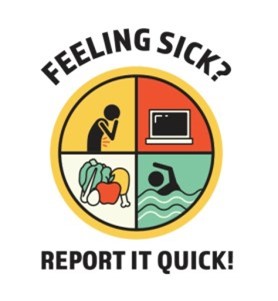If you think food or water has recently made you sick, we want to know!
Sometimes food that you ate, water that you drank, or water from pools, lakes, or rivers can have germs that make you sick. These illnesses are sometimes called food poisoning and can be mild or severe, depending on the type of germ you swallowed. The most common symptoms of food poisoning are diarrhea, vomiting, stomach cramps, and fever. Let us know if you think food or water has recently made you sick by filling out a form that asks questions about:
- Your symptoms
- Places you have recently visited
- Food you have eaten in the last few days
You can fill out the form for yourself or for a group of people (if more than one person got sick).
This tool is not a substitute for health care, and people who are feeling sick should contact their health care provider.
Click here to report an illness
If you would like to make a complaint about a retail food establishment, click here to go to DATCP.
